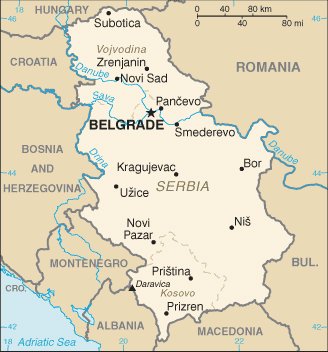Heineken acquires Rodic Brewery
You would have thought that, after the botched privatisation of Belgrade’s BIP brewery in 2005, deal making in the Serbian market had come to an end. But no. In December Heineken announced that it is to acquire the MB Rodic Brewery, in Novi Sad.
As in Russia, Heineken is a latecomer to the Serbian beer market. Its rivals InBev, Carlsberg and Efes clinched their deals years ago. Market observers thought that those like Heineken and SABMiller who were left out in the early days of privatisation would make a desperate attempt at buying BIP or Belgrade Beer Industry, one of the countries oldest and best known breweries. In 2003 its market share was 15 percent according to the Serbian Ekonomist magazine.
However, when the time came for the Serbian state to sell its 51.9 percent stake in the company, BIP became the focal point, Ekonomist journalists say, “for all of privatisation’s problems that have emerged so far: separation of units in an attempt to restructure companies and prepare for sale, choice between a strategic partner and a wealthy buyer, problems with previous owners and restitution, (un)justified fear of shady capital seeking legal status via acquisitions, dilemmas pertaining to buyer’s possible interest only in attractive locations, international interests… .”
As a consequence of the failed sale, BIP’s market share has declined to less than 7 percent (2006).
Breweries’ beer market share 2006 (imported beers not included)
| Company and towns with production facilities | Share (in percent) | |
| BIP | 6.7 | |
| InBev (Apatin, Niksic) | 51.4 | |
| Carlsberg (Celarevo) | 17.8 | |
| Efes (Pancevo, Zajecar) | 7.4 | |
| Panbeer (Jagodina, Becej, Zrenjanin) | 2.8 | |
| Atlas (Valjevo) | 1.6 | |
| MB Rodic | 11 | |
| Niska pivara | 1.3 |
Estimates: Ekonomist magazine. April 2007
Heineken, biding their time, decided to wait until the Rodic brewery came on the market – or rather until they had persuaded MB Rodic’s owners to sell out. Based in Novi Sad in northern Serbia, the brewery was built in 2003 and has a production capacity of 1.5 million hl beer, it was reported. It is owned by two brothers, who also run Serbia’s second largest supermarket chain.
Interestingly, in 2006 there was a rumour that Slovenia’s brewery Lasko would soon enter the ownership structure of MB Rodic as the brothers prepared a deal with Slowenia’s largest retailer Marcator, in which Pivovarna Lasko is a major shareholder. In April 2007 Mercator bought into the Rodics’ supermarket chain, yet nothing came of the tie up between Lasko and MB Rodic, nor of the sale of Lasko’s Croatian brewery, Jadranska, to Heineken.
As concerns the takeover of MB Rodic, Heineken has refrained from announcing the purchase price, only saying that the transaction will be funded from existing cash resources and will be earnings enhancing in 2010 and value enhancing in 2011.
It is estimated that MB Rodic’s total 2007 sales volume was 500,000 hl beer.
Heineken claims that MB Rodic is the number three player in the Serbian beer market, behind InBev and Carlsberg, yet ahead of Efes.
In 2007, Heineken expects the Serbian beer market to have grown between 3 percent and 5 percent. The market’s estimated total annual consumption in 2006 was 5.6 million hl. Per capita consumption was 52 litres in 2006.
Serbia, with a population of 7.5 million people and a GNP of USD 21.7 billion, plays in the same league as Bulgaria. Yet when it comes to average beer consumption, it trails Bulgaria by 16 litres according to Germain Hansmaennel’s 2006 report. So there is still some way to go for beer consumption as the economy picks up.
InBev spotted this opportunity early on and in 2003 offered EUR 167.64 per outstanding share for the country’s leading brewer Apatin which valued the company at EUR 262 million or 6.3 times 2002 EBITDA. InBev has since raised its market share from 39 percent to over 50 percent.
The same year Carlsberg took a 51 percent stake in the Serbian brewery Pivara Celarevo via a direct placement of the latter’s shares, and subsequently made an offer for the remaining 49 per cent stake. At that time Pivara Celarevo was the third largest brewery in Serbia and situated in the town of Celarevo in the Vojvodina province, about 130 kilometres north of the capital Belgrade.
With its two breweries (Pancevo and Zajecar) and 1.4 million hl of total annual brewing capacity, Efes Brewing International is the fourth largest brewer in Serbia with a market share of 9 percent at the end of 2007. Efes Serbia sells Efes and Miller Genuine Draft in the premium segment, where the latter is being imported, Weifert in the mainstream segment and Pils Plus, Standard and Zajecarsko in the economy segment.
Authors
Ina Verstl
Source
BRAUWELT International 2008


